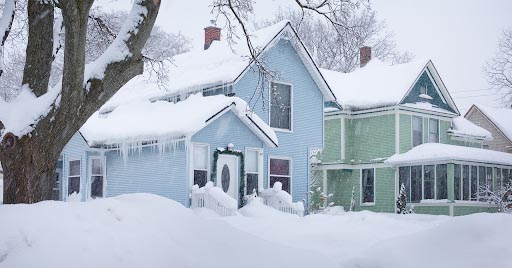How to Cut Energy Costs this Winter


Winter is right around the corner, bringing with it holiday music, peppermint mocha lattes, and, for some parts of the country, colder temperatures. For many homeowners in colder climates, it can also mean more expensive energy costs.
Many factors contribute to costlier winter energy bills. For one thing, electricity costs have been on the rise for a while now. As a homeowner, you're probably keeping the heater on more to maintain a warm interior as you spend more time indoors, you have your lights on longer because it gets dark sooner, and you may be putting up energy-consuming holiday decorations.
Fortunately, the arrival of winter doesn’t necessarily need to mean higher bills from your utility provider. The following winter energy-saving tips can help you reduce your power consumption while staying warm and comfortable during the chilliest months of the year.
A bit of preventative home maintenance can go a long way in helping you prevent heat loss, reduce your energy consumption, and lower your monthly power bills. As an extra benefit, regular maintenance can help keep your home more energy-efficient all year.
Here are a few home maintenance tasks that you can perform to keep your winter energy costs in check:
Avoid cranking the heat this winter. Instead, set your thermostat a bit lower than your usual temperature setting. Even a few degrees lower can significantly impact your energy consumption and cost. Additionally, the lower your inside temperature, the slower heat loss occurs. That’s because heat naturally moves to colder regions to reach an equilibrium. The greater the difference between the temperature of your home and the external environment, the faster your home will lose heat as it tries to reach an equilibrium with the outside air.
If you haven’t already, consider swapping your current thermostat for a programmable or smart model. These high-tech alternatives adjust your temperature automatically based on a schedule you set. Some smart thermostats even allow you to alter your settings using an app.
Cold-weather clothing like sweaters, sweatpants, and socks can help you make use of your body heat, helping you stay warm indoors even with a lower thermostat setting. It can also help you resist the temptation to increase the temperature. Cozy throw blankets are another great option, as are thicker comforters or additional blankets on the bed for nighttime warmth.
Sunlight is an excellent natural—and free!—heat source. Open your curtains or blinds and let the sun’s rays warm your house during the day. Then, as dusk approaches, lower the shades and close your curtains to keep that warmth in.
Area rugs offer a way to add color and character to any room and can really tie a space together. They feel great underfoot, providing a cozy layer of protection between the soles of your feet and the cold, hard surface of wood or tile flooring. They also offer additional insulation, helping to reduce heat loss and prevent cold air from seeping upward.
Close the doors and vents to rooms that don’t see much use. Doing so can help you avoid wasting energy. It also helps direct heat to—and keep it contained within—the areas of your home you and your family actually spend time in. To maximize your benefit, make sure that air vents leading to rooms you want to keep warm are clear of any obstructions, such as curtains or furniture.
It doesn’t get much better than relaxing by a toasty fire on a cold winter night. Once your fire goes out, though, make sure to close the dampener. That will help avoid heat loss through your chimney, keeping the residual warmth in your home longer. Keeping the dampener closed when you aren’t using your fireplace can also help prevent cold air drafts from getting in and forcing your furnace to work harder.
When water travels from your water heater to your faucets, it can quickly lose heat as it runs against the cold pipes. According to the U.S. Department of Energy, adding insulation to your hot water pipes can raise your water temperature by as much as 2 to 4 degrees Fahrenheit. Not only do you get warmer water, but you get it faster, which can help reduce your energy and water bills.
Holiday décor may look festive (who doesn’t love passing by beautifully lit homes?), but leaving it on all night can be a big waste of energy. This year, consider using smart plugs. With a smart plug, you can set your lights to turn on and off automatically. That way, you don’t have to worry about accidentally forgetting to shut everything down before going to bed. You can also help cut your holiday lighting costs by investing in LED décor. LEDs use less energy than traditional incandescent bulbs and last several years longer.
Thankfully, lowering winter energy bills doesn’t come at the cost of your comfort. With a combination of the above strategies, you can save money while also staying warm and cozy.
Sometimes, however, unexpected issues arise. That’s where America’s First Choice Home Warranty comes in. We help homeowners and families stay safe and comfortable whether they’ve been living in their home for 20 years or are buying a home for the first time. Ready to learn more? Visit us online to explore our real estate plans or contact us today!

Coverage not available in CA, WA and HI